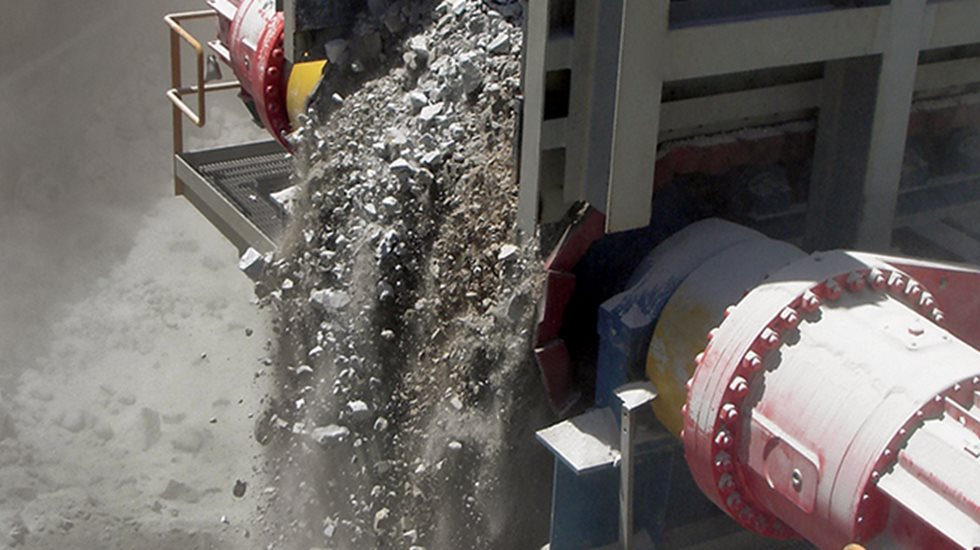Does a “tractor chain” style feeder require regular lubrication?
“Tractor chain” style apron feeders are proven to be robust, which will produce benefits such as minimal wear and low maintenance. But does a “tractor chain” style apron feeder require regular lubrication? No because the modern-day design is nearly 100% sealed for life lubricated.
The only locations on the “tractor chain” style apron feeder that require any lubrication are the two pillow block bearings located on the head shaft. These bearings only require semi-regular grease lubrication. With eliminating the need for an automatic-lubricating system the tractor chain style apron feeder reduces operating costs (OPEX).
When designing a support structure for my apron feeder, what loads and mounting bolt patterns must be considered?
When design a sub-structure for an apron feeder there are certain factors that must be considered. First, there are three types of loads: Dead load, live load operating, and live load start up. Every application’s results will cause different degrees of value for each load type.
Dead loads correspond to the self-weight of the apron feeder and any other hardware such as skirts, hoppers and chutes that may tie into the feeder frame. Live loads link to the dynamic loads caused by the material shear and torque being transmitted from the drive system (while operating and at the start up).
Live load operating condition is the normal dynamic load at 100% design capacity of the apron feeder. Live load start up conditions are the maximum dynamic load when the apron feeder is fully loaded at start up considering full motor nameplate torque plus a full start up factor of the motor.
Drop height: Does it matter?
Apron feeders are built to be robust. They must be able to feed and extract under rough conditions and that includes how the material is fed onto the feeders. Impact rails under the pans are in place to make sure the apron feeder can properly feed the materials with less downtime for maintenance. Yet, there is always a recommendation of always maintaining a bed of material on the feed end of the apron feeder during loading of a hopper, stockpile or bin.
The reason to have a continuous “bed” of material on the feeder is to soften the impact of the material that is loading onto the feeder. That way wear is reduced, and no permanent damage is done due to large materials falling on the feeder. In fact, it is a good practice to leave a bed of material in the hopper at the end of a shift or operating cycle of the apron feeder for the next day.
Should there be considerations for maintenance and access around the apron feeder?
Yes, apron feeders are known to only require minimal maintenance. But there should always be space for general access and rigging lift beams to plan for removal and re-installation of components when needed. You will find some examples below.
Some best practices for an apron feeder’s space requirements are for side access, front discharge access and rear access. Side access should be on each side of the apron feeder, and allow access to the top, return rollers and drive system (which should also have additional space around it for a laydown area). Front discharge access should be at the head chute for general inspection inside through a small inspection door. Rear access is suggested to have an additional 1,500mm at the tail end of the feeder for pans (flights) removal and installation.
Additional best practices include installing a lift beam and trolley assembly above the drive system and across the back end of the apron feeder for removal of the pans (flights). In some cases with larger apron feeders there might be a need for installation of additional levels of walkways or platforms for easier inspections.

